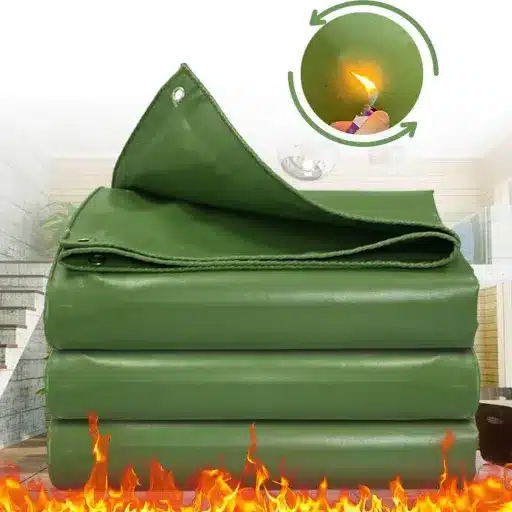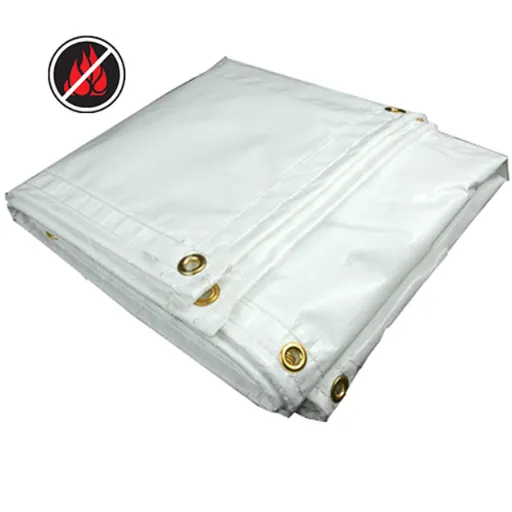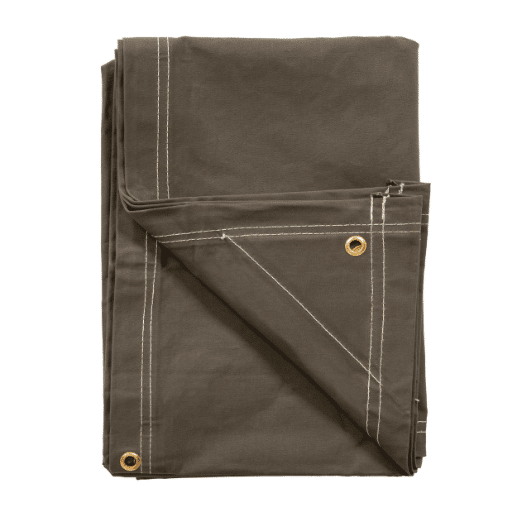The measures for choosing the right tarp are largely based on an understanding of thickness and durability. Heavy-duty tarps act as essential utilities in numerous fields and applications, ranging from construction and other forms of outdoor storage. However, one needs to know exactly what to look out for in specifications to assess the quality. This article discusses the main characteristics that define a heavy-duty tarp, focusing on thickness as the most relevant basis for its performance and lifespan. From protecting equipment against harsh conditions to covering loads for transportation or acting as a barrier against environmental elements, this article will give you the essential detailed knowledge of the product to make a purposeful choice.
Definition of Heavy Duty Tarps
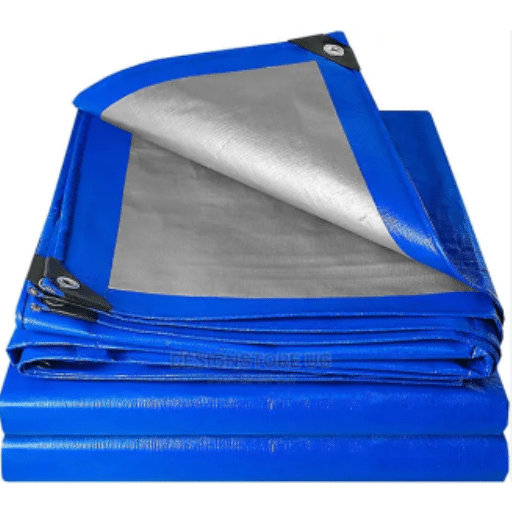
What Is a Heavy-Duty Tarp?
A heavy-duty tarp is a highly durable and somewhat versatile protective cover designed for tough applications requiring resistance to the elements. Unlike the standard tarps, heavy-duty tarps employ more robust materials such as polyethylene, canvas, or vinyl, engineered for higher tensile strength, tear resistance, and waterproofing properties. Heavy-duty tarps are generally considered to be 10-20 mils thick or more for plastic types, have higher denier ratings for canvas strength, with reinforced seams and grommets set at regular intervals to permit solid fastening. Typical use may be for covering outdoor equipment; protection of construction sites; truck bed covering; or temporary shelter during extreme weather conditions. Being very long-lasting and reliable, works across construction, agriculture, and logistics industries.
Common Materials Used for Heavy Duty Tarps
Heavy duty tarps are manufactured using different materials, each selected for a specific set of requirements such as strength, weather resistance, and longevity. Most common materials in the construction include:
| Material | Characteristics | Best Applications |
|---|---|---|
| Polyethylene (PE) | Lightweight yet strong, high tensile strength, UV resistant, water and chemical resistant, woven core with laminated coating | Covering machinery, weather shelters, outdoor applications |
| Polyvinyl Chloride (PVC) | Ultimate tear resistance and flexibility, mold and mildew resistant, fireproof treatment, superior waterproofing | Industrial environments, marine applications, harsh settings |
| Canvas | Natural or synthetic fiber, breathable, versatile, wax or coating treatment for water resistance | Equipment protection requiring airflow, moisture-emitting applications |
| Vinyl-Laminated Polyester | Functionality and aesthetics, excellent abrasion resistance | Long-term outdoor applications, transport, agriculture |
| Nylon | Superior strength-to-weight ratio, abrasion resistance, waterproofing and UV protection treatment | Load-bearing applications, high-stress situations |
Note: The different materials that these tarps come in are often dependent upon the type of usage, environmental conditions, or more specific application requirements. If we take another example, all those industries require heavy-duty performance in extreme temperature conditions, where PVC or vinyl tarp could be preferred. Polyethylene on the other hand will possibly be used much sidewise by agricultural and logistics factories.
Advantages of Heavy Duty Tarps
Heavy-duty tarps bring about some advantages in various industries and act as an instrument in many applications. Recent data reveal a few key benefits, such as being more durable under harsh conditions. Equipped with additional coatings like UV-resistant polyvinyl chloride (PVC) or polyethylene materials, these tarps can withstand months or years of exposure to the sun, violent winds, and rains mixed with dust or snow.
From logistics standpoints, it ensures tarpaulin-covered cargo would be reliably protected against damages by weather elements or upon collisions with solid debris. Highly customizable, heavy-duty tarps can also feature things like reinforced grommets or waterproof seams that meet peculiar specifications of various industries. Agriculture uses heavy-duty tarps, primarily for crop coverage, soil stabilization, and sheltering of animals.
Further improvements mentioned by latest trends suggest a rising popularity of heavy-duty tarps as opposed by their more traditional uses for sustainability. Most manufacturers now would incorporate recyclable materials or biodegradable additives in keeping with environmental approaches. These, along with their versatility, cost-effectiveness, make heavy-duty tarps a valuable resource for both professional and personal purposes.
Understanding Tarp Thickness
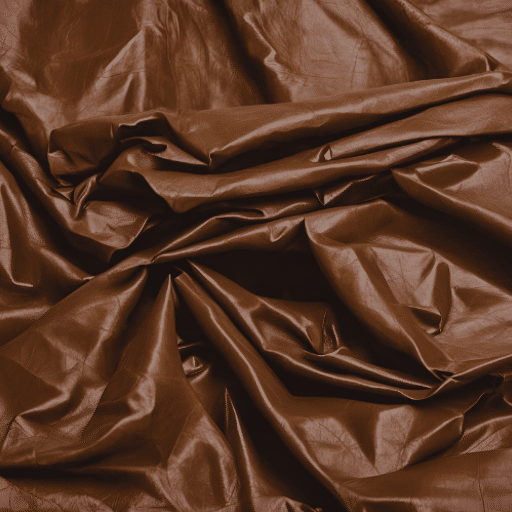
What Does Mil Thickness Mean?
Mil thickness measures a tarp’s thickness in millimeters; one mil is one-thousandth of an inch (0.001 inch). This measurement plays a vital role in equating the tarp’s durability and strength, making it pertinent as service duration. For example, a 10-mil tarp would be 0.01 inches thick and would stand a good chance to resist wear and puncture, along with some heavy meteorological conditions.
According to aggregated data from search engine trends, the mil rating on tarps for greater durability has become a heavily sought term by the ranking consumers, often placing heavy tarps from 10 to 20 mils as the choice forbearing heavy-duty works such as construction and outdoor covering, among others. It signifies a concentration on more protection and durability. With an understanding of mil thickness by both manufacturers and consumers alike, this gives a numeric value to estimate whether a tarp is suitable for a particular job to render it well as a reasonable length of life.
Typical Thickness for Heavy Duty Tarps
| Thickness Range | Category | Typical Applications |
|---|---|---|
| 10-12 mils | Light Heavy-Duty | Casual outdoor coverings, residential work, light wear scenarios |
| 16-20 mils | Heavy-Duty | Industrial coverings, construction, extended outdoor use |
| 20+ mils | Super Heavy-Duty | Extreme conditions, heavy machinery protection, permanent barriers |
The thickness for heavy-duty tarp typically ranges between 10 and 20 mil-thick, thereby presenting a firm middle ground between flexibility and strength. According to some recent data, heavy-duty tarps of ranges 10 to 12 mils usually find themselves in protective use for more casual, temporary outdoor coverings and residential work where light wear and tear are counted against. For those remaining on the heavy side are 16 to 20 mils, preferred by sturdier sheathing on industrial coverings, construction, and extended outdoor uses. These tarps in the thick category will hold well under harsher weather, resisting tears and offering durability for an extended duration. Hence, the thicker choice for tarps varies with time as it merely depends on intended use and the amount of environmental rigors, like UV exposure, wind, or physical abrasion, the tarp will stand.
How Thickness Matters for Durability and Performance
Thick Tarps (20+ mils)
- Enhanced UV ray resistance
- Superior puncture protection
- Excellent tear resistance
- Suitable for heavy-duty industrial use
- Extended lifespan
Thin Tarps (5-10 mils)
- Lightweight and portable
- Easy handling
- Cost-effective for short-term use
- Suitable for temporary weather protection
- Good for low-impact activities
A certain degree of tarp thickness will firmly decide on the range of durability and practical aspects that will be placed on any application. Thicker in mil is better and provides enhanced resistance against stresses from UV rays, puncture, and tearing. Data has it that more than 20 mils thick tarps are usually in demand for practices that require stressing loads, including industrial heavy-duty and heavy records weather conditions. Heavy-duty tarps will not only make the bot last longer but will also provide heavy protection for valuable equipment and materials.
On the contrary, thinner ones, falling somewhere between 5 and 10 mils, will weight and cover all sorts of low-impact activities, such as temporary weather protection or short-time storage. It will be basically good when portability and ease in handling carry more weight than durability over time. Understanding the correlation between thickness and performance will enable the users to choose appropriately so that the user’s individual needs are adequately met at the lowest possible cost, thus cutting down on premature tarp replacement.
Choosing the Right Tarp for Your Needs
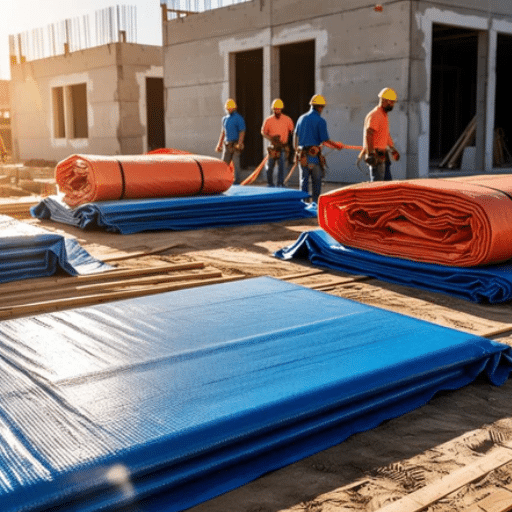
Factors to Consider When Selecting Tarp Thickness
When choosing the appropriate tarp thickness, it is critical to evaluate your specific use case and the environmental conditions the tarp will be subjected to. Thicker tarps, generally measured in mils, offer greater durability and resistance to wear and tear, making them suitable for demanding applications like heavy-duty construction projects or long-term outdoor exposure. Conversely, lighter tarps with a thinner profile are typically sufficient for less rigorous tasks, such as covering furniture during indoor painting projects or protecting items from light rain.
This search pattern data indicate how consumers often look at how to balance cost and performance when purchasing a tarp. Industry guidelines suggest 6-10 mil tarps for general purposes, such as household and moderate outdoor cover. When considering industrial or agriculture applications, where exposure to harsh weather or heavy weight load is the norm, use tarps with 12 mils thick or greater. Further specification goes into materials consideration: polyethylene or canvas—engendering waterproofing and UV resistance of the tarp. By examining the latest trends, giving these factors much priority, a user will be enabled to make data-driven decisions that fit operational demands and are cost-conscious.
Common Use Cases for Different Thicknesses
Light-Duty Tarps (5-8 mils)
These are ideal for temporary coverage solutions, such as shielding outdoor furniture, gardening equipment, or short-term construction projects. Their lighter weight makes them easy to handle but limits their ability to withstand prolonged exposure to harsh weather.
Medium-Duty Tarps (9-11 mils)
Frequently used for camping, medium-duty tarps provide a balance between lightweight portability and moderate durability. They are often employed as tent covers, boat sheltering, or general-purpose protection for outdoor equipment in semi-exposed environments.
Heavy-Duty Tarps (12-16 mils)
Designed for long-term exposure to challenging conditions, these tarps are commonly used in industrial settings, agriculture, and disaster relief operations. Their superior strength ensures resistance against tears, abrasions, and extended UV exposure, making them essential for high-stress applications.
Super Heavy-Duty Tarps (17 mils or higher)
These tarps excel in extreme-use scenarios, including covering sizable machinery, creating temporary roofing during construction, or providing permanent weatherproof barriers. Their exceptional thickness ensures they can handle significant weight loads and offer unparalleled protection under the most demanding conditions.
Industry Insight: Through a cross-reference among key keyword phrases and a dataset from search trends, heavy and super heavy tarps can be shown to be the most sought-after solutions in industrial and disaster management use cases. According to this response data, there is a growing demand for durable and long-lasting materials that firmly bear the rigors of the work and environmental stressors, emphasizing the place of longevity and reliability in the selection of tarps.
Choosing the Right Size and Material
When picking the correct size and material of tarps, one must consider the specifications of the particular application and the environmental demands precipitated therefrom. According to the most recent search data, heavy-duty tarps are preferred for uses demanding higher tensile strength along with resistance to weathering, such as site covers or emergency shelters. A proper size determination can be arrived at by measuring the area dependent for coverage, while also allowing for a margin of overlap being needed to fasten securely. The material becomes crucial next: polyethylene tarps protect against water and UV rays, whereas the vinyl type performs excellently in resisting abrasion, oil, and chemical hazards, making them the perfect choice for industrial settings. Therefore, aligning tarp specifications with the aforesaid considerations is what guarantees excellent performance of the tarp coupled with durability tailored precisely to the user’s needs.
Waterproof and UV Resistance in Tarps
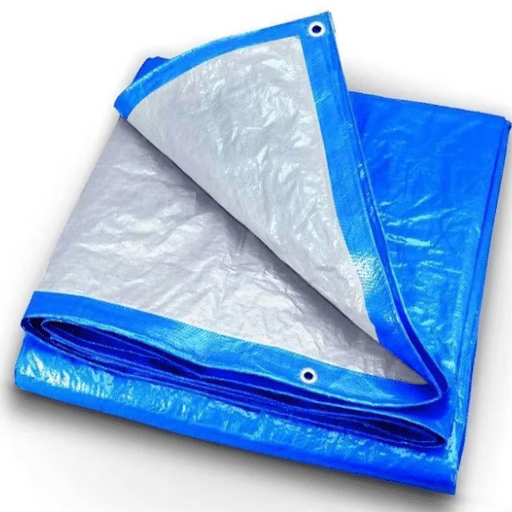
Importance of Waterproof Tarps
Waterproof tarps are pivotal in various settings where, specifically, protection against water-cum-water damage must be accorded to whatever the item, equipment, or structure to be waterproofed. An increasingly abundant number of Internet users are searching for solutions to waterproof things now than ever before, signifying an increased awareness on the importance in the commercial and residential applications of waterproofing. Waterproof tarps are the last barrier protecting the object below from rain, snow, dew, or any form of moisture, and by so doing, they maintain the material’s integrity and, to a certain degree, its durability. Construction, farming, and transportation industries rely heavily on the use of waterproof tarps against moisture-related risks in order to assure that their investments are set against unpredictability in the weather. To add to this, newer approaches in material technology have resulted in tarps that are more durable and extremely lightweight while still combining water resistance with increased UV protection, enabling their usage to be extended into classically harsh environments.
Understanding UV Resistance in Heavy Duty Tarps
The feature and behavior of UV resistance in heavy-duty tarps is attained mainly by means of modern materials engineering and chemical treatment. Polyethylene and polyvinyl chloride (PVC), the materials usually constituting such tarps, are often impregnated with the UV inhibitors during the manufacturing process. These inhibitors absorb and dissipate the harmful ultraviolet radiation and stop the degradation of the tarp material when exposed to sunlight over considerable periods of time.
According to recent search trend and users queries, there seems to be a growing interest to know about the life span and behavior of UV-resistant tarps in harsh environments. As per the latest data high quality tarps could withstand, provide that the conditions of their maintenance are right, continuous UV exposure during several years. The UV stabilizers essentially minimize fading and prevent the material from becoming brittle; therefore, the tarp remains strong enough for agriculture applications through to industrial enclosures.
The user should take into consideration the thickness of the tarp as well as the rating of its UV resistance and the actual environment where it intends to put the tarp to use. Leading manufactures will be able to supply certificates and ratings for UV resistance, which could be considered as an accurate yardstick for analysis and decision-making. This will allow the selection of a tarp with the needed life span and performance requirements for the intended use.
How Reinforced Edges Increase and Enhance Durability
Reinforced edges significantly enhance the durability and longevity of tarps when subjected to punishing environments. By using more substantial materials for double-stitched hems or welded seams along the edges, reinforced edges greatly reduce the risk of tear, fray or the structural failure of the tarp under stress. According to recent data, one main cause of early wear and tear was stresses along the periphery, particularly strong winds and repeated tension from sharp objects.
Reinforced edges help solve these problems by giving a strong framework that evenly distributes tension and resists external pressures. The grommet reinforcements also help, providing secure anchoring points, and the points continue to hold the tarp firmly even under rough usage conditions. Studies have demonstrated that tarp systems with reinforced edges tend to resist UV degradation better and also allow better protection from moisture. Thus, the structural bridge from edge reinforcement accentuates the importance of selecting reinforced-edge tarps for high reliability and performance-based application needs.
Frequently Asked Questions
What’s the mil thickness of a heavy-duty tarp?
Heavy-duty tarps’ mil thickness typically ranges from 10 to 20 mils, with 12 and 16 mil being some options. Here, one mil equals one-thousandth of an inch, so basically a 20 mil tarp would be 0.020 inches thick. The tarps of this thickness are very durable against wear and tear and are considered to those for heavy usage. Generally speaking, the thicker the tarp, the better it protects against severe weather. Heavy-duty tarps are used primarily for covering outdoors in bad weather conditions in places like construction sites or for covering outdoor furniture.
How does the tarpaulin thickness affect durability?
The thickness of a tarp sets its strength and durability for a longer period. An 18 Ounce with 18 oz per-square-yard tarp would be more resistant to tearing, better at handling heavy rain and extreme weather, while this 20-mil tarp is far-more durable than a 10-mil tarp and can be used very heavily without losing waterproofing. In fact, tarps made from reinforced materials or those that have reinforced edges tend to be very durable. You may want to consider the specific needs of your project versus potential weather conditions to see which tarp will provide the best performance for you.
What materials are used to manufacture heavy duty tarps?
Heavy-duty tarps can be manufactured with different materials such as polyethylene, vinyl, and canvas. Poly tarps are light and waterproof; vinyl tarps stand higher in durability, especially in extreme weather. Canvas offers an organic option with a fair degree of breathability and durability, which makes it suitable for some purposes. Others may be constructed with a double-coated film to make them waterproof and resist wear-and-tear. While considering a tarp, it is important to think about what it will be used for and the weight of the material, so you end up with an option suitable for your needs.
Are heavy duty tarps offered in different sizes?
Heavy-duty tarps come in standard sizes and customized sizes to meet specific needs. A standard tarp ranges in sizes from small to a large tarp dimension, so that you got the right dimension for your project. Say you have to cover a roof, protect outdoor furniture, or provide a shelter for construction; you get an apt tarp size in each case. However, you will also need to consider tarp thickness as a bigger tarp might need sturdier materials to handle the wear and tear involved. Measure your area very carefully, so you are positive that the tarp you intend to look for would serve you adequately with cover and protection.
What are the waterproofing properties of heavy-duty tarps?
Because of the waterproof nature of heavy-duty tarps, they became a great option for many applications on the outdoors. Made out of materials such as polyethylene and vinyl, they naturally repel the ingress of water. The waterproof abilities of the tarps vary depending on their thickness, the thicker being better able to protect against heavy rains. The heavy-duty tarps also commonly incorporate a UV-resistant coating, which prevents damage from sun rays while still, maintaining its waterproof abilities. Besides considering its waterproof capabilities, do think about the general durability of the tarp so as to pick the one that suits your needs best.
Reference Sources
- University of Delaware – Tarping for No-Till Cover Crop Management
This document discusses the use of heavy-duty tarps in agricultural settings, including their thickness and material specifications.
Read the document here - University of California Agriculture and Natural Resources – Plasticulture in Vegetable Production
This resource provides insights into the thickness of plastic films and tarps used in agricultural practices, ranging from 1 to 4 mils.
Read the document here - University of Florida IFAS Extension – Using Sandbags for Flood Protection
This article mentions the use of heavy-duty tarps for emergency purposes, including their thickness and durability.
Read the article here

